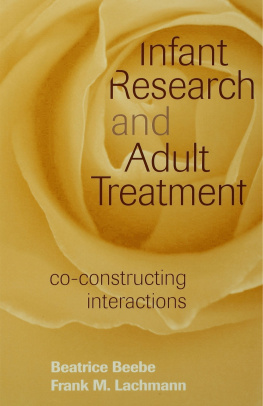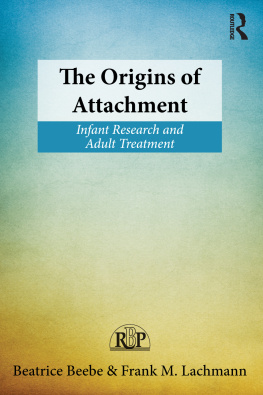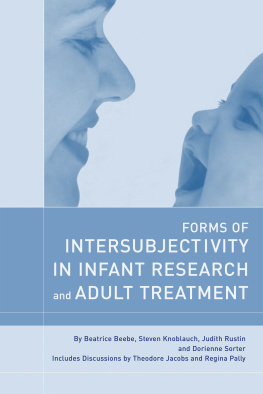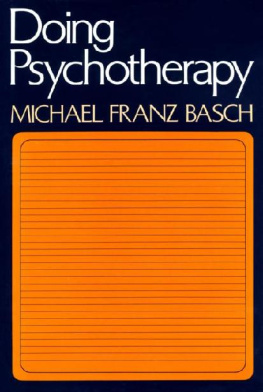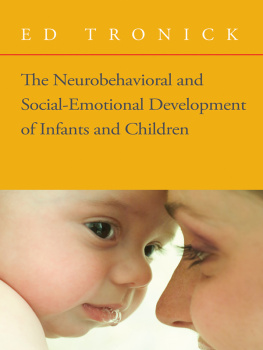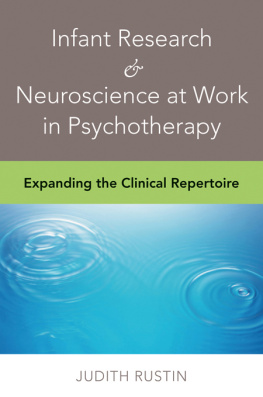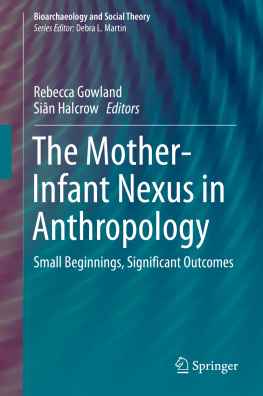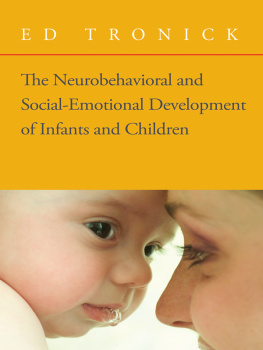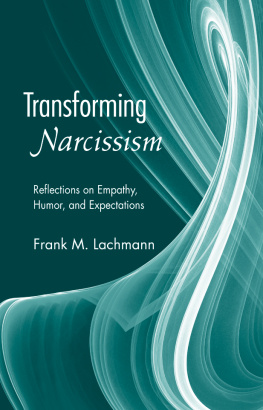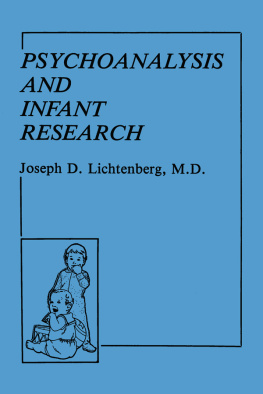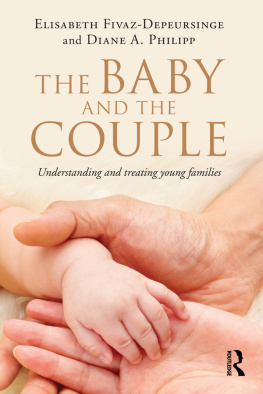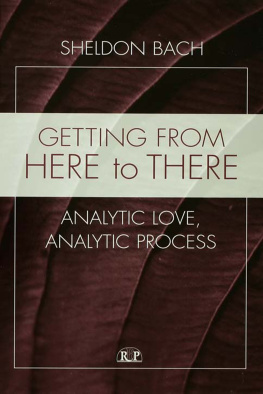Beatrice Beebe - Infant Research and Adult Treatment: Co-constructing Interactions
Here you can read online Beatrice Beebe - Infant Research and Adult Treatment: Co-constructing Interactions full text of the book (entire story) in english for free. Download pdf and epub, get meaning, cover and reviews about this ebook. year: 2005, publisher: Routledge, genre: Home and family. Description of the work, (preface) as well as reviews are available. Best literature library LitArk.com created for fans of good reading and offers a wide selection of genres:
Romance novel
Science fiction
Adventure
Detective
Science
History
Home and family
Prose
Art
Politics
Computer
Non-fiction
Religion
Business
Children
Humor
Choose a favorite category and find really read worthwhile books. Enjoy immersion in the world of imagination, feel the emotions of the characters or learn something new for yourself, make an fascinating discovery.
- Book:Infant Research and Adult Treatment: Co-constructing Interactions
- Author:
- Publisher:Routledge
- Genre:
- Year:2005
- Rating:5 / 5
- Favourites:Add to favourites
- Your mark:
Infant Research and Adult Treatment: Co-constructing Interactions: summary, description and annotation
We offer to read an annotation, description, summary or preface (depends on what the author of the book "Infant Research and Adult Treatment: Co-constructing Interactions" wrote himself). If you haven't found the necessary information about the book — write in the comments, we will try to find it.
Infant Research and Adult Treatment is the first synoptic rendering of Beatrice Beebes and Frank Lachmanns impressive body of work. Therapists unfamiliar with current research findings will find here a comprehensive and up-to-date overview of infant competencies. These competencies give rise to presymbolic representations that are best understood from the standpoint of a systems view of interaction. It is through this conceptual window that the underpinnings of the psychoanalytic situation, especially the ways in which both patient and therapist find and use strategies for preserving and transforming self-organization in a dialogic context, emerge with new clarity.
They not only show how their understanding of treatment has evolved, but illustrate this process through detailed descriptions of clinical work with long-term patients. Throughout, they demonstrate how participation in the dyadic interaction reorganizes intrapsychic and relational processes in analyst and patient alike, and in ways both consonant with, and different from, what is observed in adult-infant interactions. Of special note is their creative formulation of the principles of ongoing regulation; disruption and repair; and heightened affective moments. These principles, which describe crucial facets of the basic patterning of self-organization and its transformation in early life, provide clinical leverage for initiating and sustaining a therapeutic process with difficult to reach patients.
This book provides a bridge from the phenomenology of self psychological, relational, and intersubjective approaches to a systems theoretical understanding that is consistent with recent developments in psychoanalytic therapy and amenable to further clinical investigation. Both as reference work and teaching tool, as research-grounded theorizing and clinically relevant synthesis, Infant Research and Adult Treatment is destined to be a permanent addition to every thoughtful clinicians bookshelf.
Beatrice Beebe: author's other books
Who wrote Infant Research and Adult Treatment: Co-constructing Interactions? Find out the surname, the name of the author of the book and a list of all author's works by series.

